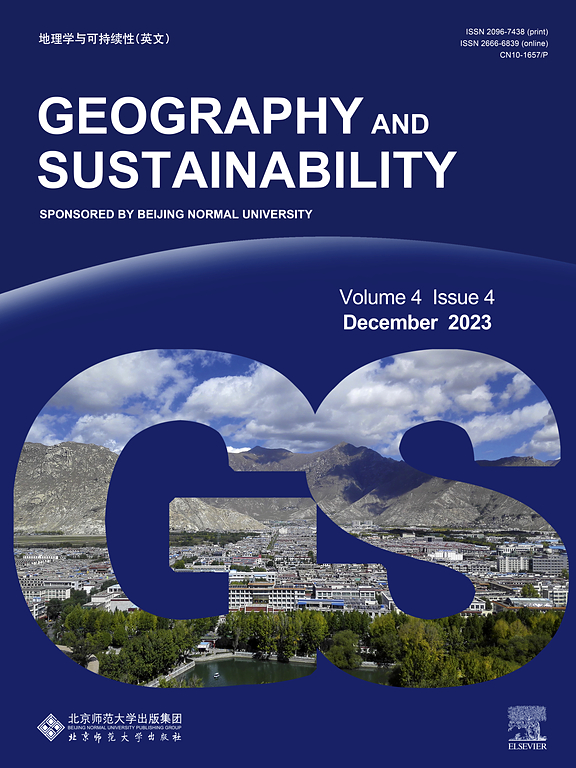How does new-type urbanization promote green development efficiency in China? The mediating role of governments, enterprises, and residents
IF 8
1区 环境科学与生态学
Q1 GEOGRAPHY, PHYSICAL
引用次数: 0
Abstract
New-type urbanization (NTU) is proposed by China to solve unsustainable issues and improve green development efficiency (GDE) during the process of rapid urbanization. However, the impact mechanism of NTU on GDE is unclear. Using panel data of 282 prefecture-level cities in China from 2010 to 2019, we measured NTU and GDE to describe their spatiotemporal pattern and relationship evolution. The fixed effects panel model and mediating effect panel model were further utilized to analyze the benchmark impact, mediating mechanism and spatiotemporal heterogeneity of NTU on GDE. The results showed that NTU improved, with the highest levels observed in the eastern region, while GDE increased with fluctuations, performing better in both the eastern and western regions. With the proportion of double-high cities increasing from 13.83 % to 43.62 %, the NTU-GDE relationship was upgraded. Overall, every 1 % improvement in NTU increased GDE by 0.3111 %, and the enterprise effect, resident effect and government effect played a positive mediating role from high to low. During the later stage of NTU, its impact on GDE strengthened significantly, and the mediating role of governments was optimized. The eastern region was the only region with three positive mediating roles of governments, enterprises and residents. These findings will promote GDE through NTU in China and serve as a valuable reference for sustainable global urbanization.

求助全文
约1分钟内获得全文
求助全文
来源期刊

Geography and Sustainability
Social Sciences-Geography, Planning and Development
CiteScore
16.70
自引率
3.10%
发文量
32
审稿时长
41 days
期刊介绍:
Geography and Sustainability serves as a central hub for interdisciplinary research and education aimed at promoting sustainable development from an integrated geography perspective. By bridging natural and human sciences, the journal fosters broader analysis and innovative thinking on global and regional sustainability issues.
Geography and Sustainability welcomes original, high-quality research articles, review articles, short communications, technical comments, perspective articles and editorials on the following themes:
Geographical Processes: Interactions with and between water, soil, atmosphere and the biosphere and their spatio-temporal variations;
Human-Environmental Systems: Interactions between humans and the environment, resilience of socio-ecological systems and vulnerability;
Ecosystem Services and Human Wellbeing: Ecosystem structure, processes, services and their linkages with human wellbeing;
Sustainable Development: Theory, practice and critical challenges in sustainable development.
 求助内容:
求助内容: 应助结果提醒方式:
应助结果提醒方式:


